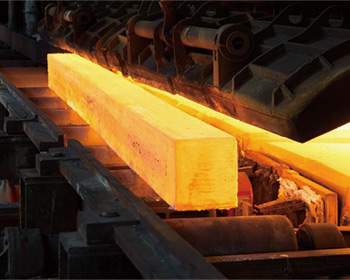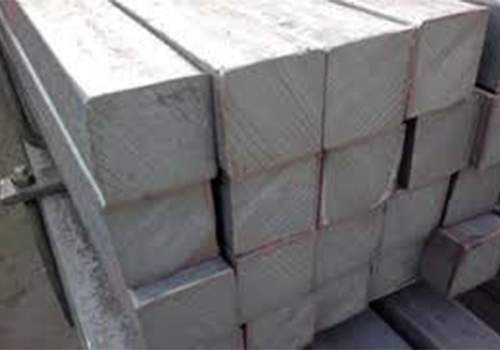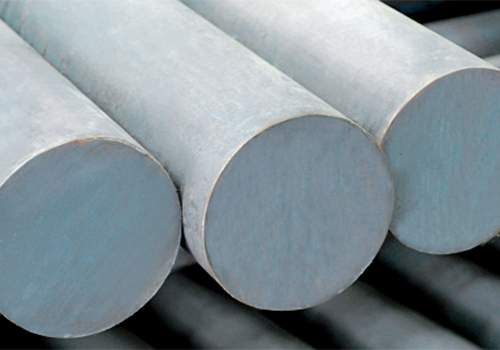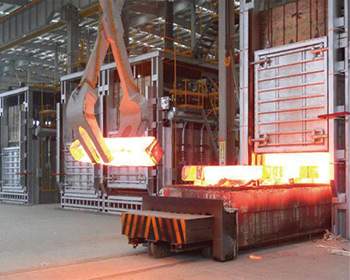
How Q235 Steel Composition Affects Performance
Table of Contents
Introduction

Steel is one of the most widely used materials in the world due to its durability, strength, and versatility. Among the various types of steel, Q235 steel stands out as one of the most commonly used in construction, manufacturing, and various other industries. Understanding the Q235 steel composition is crucial for making informed decisions about its use and maximizing its performance in specific applications.
Q235 steel is a mild steel, often used for structural components, as it provides a good balance between strength, toughness, and ease of fabrication. The composition of Q235 steel influences its mechanical properties, corrosion resistance, and overall performance in different environmental conditions. This blog will explore the key components of Q235 steel, how each element contributes to its properties, and why it is a preferred choice for various industries.
What is Q235 Steel?
Q235 steel is a Chinese standard steel grade that is equivalent to ASTM A36 steel in the United States. It is primarily composed of iron, carbon, and various alloying elements. The “Q” in Q235 stands for “qu” (meaning “yield”), while the number 235 represents the yield strength of the material in megapascals (MPa). This steel grade is widely used in structural steel applications such as buildings, bridges, and machinery, due to its ability to withstand moderate stress levels while remaining cost-effective.
Key Characteristics of Q235 Steel:
- Yield Strength: 235 MPa.
- Chemical Composition: Primarily iron with small amounts of carbon, manganese, silicon, and other elements.
- Applications: Used in construction, bridges, industrial equipment, and more.
- Durability: Adequate toughness and resistance to wear and tear.
Q235 Steel Composition: What’s Inside?


Carbon (C)
Carbon is one of the most important elements in steel, and its concentration directly affects the hardness and strength of the steel. In Q235 steel, the carbon content is typically around 0.12-0.20%, which makes it a low-carbon steel. This low level of carbon provides Q235 steel with its characteristic combination of strength and ductility, allowing it to be easily welded and formed without cracking.
- Effect on Performance: The relatively low carbon content ensures that Q235 steel remains malleable, making it suitable for applications where moderate strength is required without sacrificing the ability to bend and shape.
Manganese (Mn)
Manganese is an essential alloying element in steel, as it improves the hardenability, tensile strength, and toughness of the material. In Q235 steel, the manganese content ranges from 0.30% to 0.70%. Manganese helps to improve the steel’s resistance to abrasion and its overall strength.
- Effect on Performance: The presence of manganese enhances the steel’s strength and toughness, making it more suitable for load-bearing applications. It also improves the steel’s resistance to corrosion and wear.
Silicon (Si)
Silicon is often used as a deoxidizing agent in steel production. In Q235 steel, silicon content is typically around 0.10% to 0.35%. Silicon helps to improve the steel’s strength and enhances its ability to resist oxidation, particularly in high-temperature environments.
- Effect on Performance: Silicon contributes to the steel’s overall strength, and it also helps prevent rust and oxidation, making Q235 steel more durable in outdoor or industrial applications.
Phosphorus (P)
Phosphorus is generally considered an undesirable element in steel as it can lead to brittleness. The amount of phosphorus in Q235 steel is strictly controlled, with the content typically kept below 0.045%.
- Effect on Performance: While phosphorus can improve the steel’s machinability, excessive amounts can negatively impact its toughness. Therefore, limiting phosphorus content is essential for ensuring that Q235 steel remains suitable for structural applications where toughness is critical.
Sulfur (S)
Similar to phosphorus, sulfur is considered an impurity in steel. High sulfur content can result in poor weldability and reduced ductility. The sulfur content in Q235 steel is kept below 0.05% to ensure optimal performance.
- Effect on Performance: Low sulfur levels in Q235 steel help prevent the material from becoming too brittle and ensure that it can be welded without issues.
Other Elements
Other trace elements, such as copper, nickel, and chromium, can also be present in small amounts in Q235 steel, depending on the specific manufacturing process. These elements may enhance specific properties such as corrosion resistance, but their concentrations are typically low.
- Effect on Performance: These trace elements generally contribute to the steel’s overall durability, resistance to corrosion, and its ability to perform in challenging environmental conditions.
The Impact of Q235 Steel Composition on Its Performance
The performance of Q235 steel is influenced by the careful balance of its chemical composition. Let’s explore how the key elements in Q235 steel affect its mechanical properties and make it suitable for different applications.
Strength and Ductility
The carbon content in Q235 steel plays a major role in determining its strength and ductility. With its low carbon content, Q235 steel strikes a balance between being strong enough for structural applications while remaining ductile enough to be shaped and welded easily. This balance makes it ideal for construction projects, where steel needs to withstand moderate loads without cracking under stress.
Corrosion Resistance
The addition of manganese and silicon in the composition of Q235 steel improves its resistance to oxidation and corrosion. Manganese helps to strengthen the steel, while silicon increases its resistance to rusting, making Q235 steel suitable for outdoor use, even in humid or coastal environments. However, compared to higher-grade steel, Q235 still requires protective coatings for long-term corrosion resistance in harsher conditions.
Toughness
The presence of manganese and the controlled amount of phosphorus and sulfur contribute to the overall toughness of Q235 steel. This makes the steel capable of withstanding impact and shock loading in applications like bridge construction or industrial machinery.
Weldability
Q235 steel is known for its excellent weldability. Thanks to its low carbon content and the balance of alloying elements, it is easier to weld and fabricate compared to higher-strength steels. This makes Q235 steel the preferred choice for various construction and manufacturing projects where welding is required.
Hardness
Although Q235 steel is not the hardest steel grade available, its low carbon content provides sufficient hardness for most structural applications. This makes it suitable for projects that do not require the extreme hardness of higher carbon steels but still demand a material that is tough and durable.
Q235 Steel Composition Table
Here is a summary of the typical composition of Q235 steel:
| Element | Composition (%) |
|---|---|
| Carbon (C) | 0.12–0.20% |
| Manganese (Mn) | 0.30–0.70% |
| Silicon (Si) | 0.10–0.35% |
| Phosphorus (P) | ≤ 0.045% |
| Sulfur (S) | ≤ 0.05% |
| Iron (Fe) | Balance |
How to Choose the Right Steel for Your Project

Choosing the right type of steel for a project depends on several factors, including the mechanical properties required, the environmental conditions, and the fabrication needs. When choosing steel, consider the following:
- Strength Requirements: For projects that require high strength, you may want to consider higher-grade steels. Q235 is ideal for projects that need moderate strength.
- Environmental Conditions: For outdoor projects, consider how the steel will be exposed to moisture or chemicals. Q235 offers reasonable corrosion resistance but might require additional coatings in more aggressive environments.
- Fabrication Needs: If your project involves a lot of welding, Q235 steel may be the right choice due to its excellent weldability.
- Cost Considerations: Q235 steel is affordable and provides good performance at a reasonable cost, making it a popular choice for construction and manufacturing applications.
Conclusion: Q235 Steel Composition
The Q235 steel composition plays a pivotal role in determining its performance characteristics, making it a reliable material for various applications. Its balance of strength, ductility, corrosion resistance, and weldability make it suitable for construction, manufacturing, and general structural purposes. Understanding the composition of Q235 steel helps engineers and manufacturers make informed decisions about its use, ensuring that it meets the requirements of each specific project.
In summary, Q235 steel offers a combination of affordability and performance, making it an ideal choice for projects where moderate strength and durability are needed.
FAQ
What is the Q235 steel composition?
The Q235 steel composition primarily includes carbon, manganese, silicon, phosphorus, sulfur, and iron. The carbon content is typically between 0.12% and 0.20%, making it a low-carbon steel. The addition of manganese and silicon improves the steel’s strength, weldability, and resistance to corrosion.
How does the Q235 steel composition affect its mechanical properties?
The Q235 steel composition directly influences its mechanical properties, such as strength, toughness, and ductility. The low carbon content ensures good weldability and ductility, while manganese improves tensile strength, and silicon enhances corrosion resistance. This combination makes it suitable for various structural applications.
Can the Q235 steel composition be customized for specific applications?
Yes, the Q235 steel composition can be adjusted to meet specific requirements. Manufacturers can modify the alloying elements, such as increasing the manganese or silicon content, to enhance certain properties like strength or corrosion resistance, depending on the intended application.
What are the benefits of understanding the Q235 steel composition?
Understanding the Q235 steel composition helps engineers and manufacturers make informed decisions regarding the material’s suitability for a specific project. It allows for a better understanding of its strength, weldability, toughness, and resistance to wear and corrosion, which ultimately ensures the material’s longevity and performance.
How does the Q235 steel composition compare to other steel grades?
Compared to other steel grades, Q235 steel composition offers a balance between affordability, strength, and weldability. While it does not have the extreme strength of high-carbon steels, its low carbon content and alloying elements make it an excellent choice for applications that require moderate strength and excellent workability. It is particularly suitable for construction and light industrial use.






